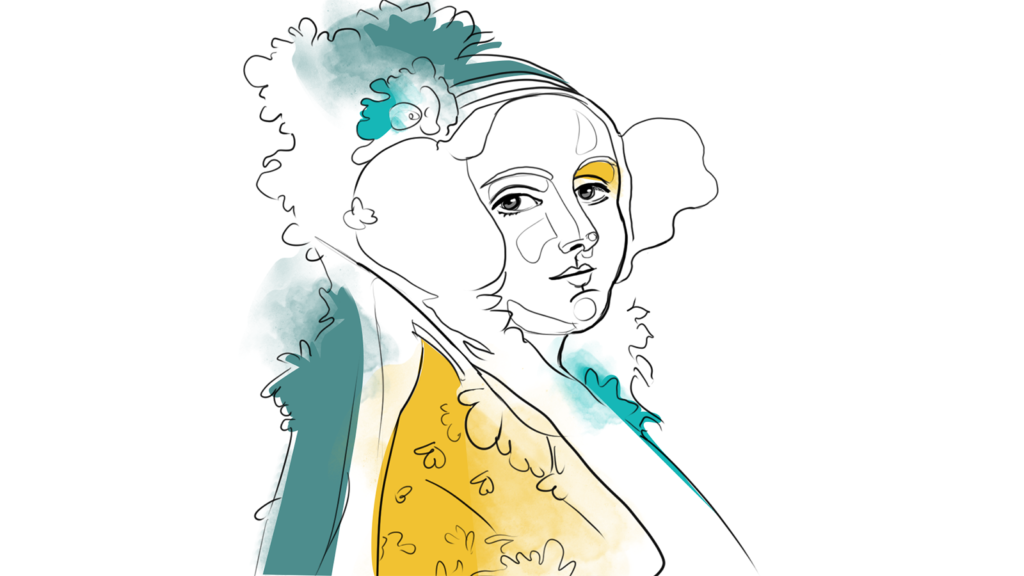Ada Lovelace is considered the world’s first computer programmer. In 1842, Lovelace translated an Italian publication about Charles Babbage’s Analytical Engine into English. However, this was no ordinary translation.
Lovelace added extensive notes of her own, suggesting ways the Analytic Engine could be programmed to calculate certain equations using a series of punch cards. Her insights ultimately inspired Alan Turing’s work on the first modern computers in the 1940s.
Ada Lovelace is a brilliant thinker because she defied many stereotypes of mathematicians. She was not a “human calculator” who lacked social skills or knowledge of other disciplines. Let’s have a look at Lovelace’s key thinking strategies and how we can apply these to our own lives.
This article is part of the Brilliant Thinkers series, which explores the thought processes, working habits, and decision-making principles applied by intellectuals who profoundly impacted the world with their discoveries and the way they challenged the status quo.
Ada Lovelace’s thinking strategies
Not only was Ada Lovelace wildly imaginative, but she also valued her relationships in the scientific community and frequently connected science and literature. Throughout her life, she applied three key strategies to grow her knowledge and make new discoveries.
1. Investing in mentorship. Lovelace understood the importance of cultivating relationships. After attending a house party in her teens at the home of Charles Babbage, a mathematician and inventor, Ada became enthralled with his plans to develop an early version of the modern computer called the Analytical Engine. Eventually, the relationship grew into one Ada could rely on for mentorship and support.
For instance, after her mathematical journey was interrupted by marriage and family, Lovelace reached out to Babbage to return to mathematics. Babbage connected her to a professor at the University College of London, where she learned how to perform calculus by exchanging letters. Her ongoing professional relationship with Babbage was critical to her studies and success.
2. Building bridges across knowledge areas. Ada was the daughter of Annabelle Milbanke and Lord Byron (yes, that Lord Byron, Romantic poet and author of Don Juan, among other works). After separating from Ada’s father, Annabelle ensured Ada received a rigorous education in math and science. However, Ada also studied literature and other disciplines.
Ada had the unique ability to use poetic, pattern-based language to describe mathematical insights. She often used metaphors to explain scientific theories, seeing no need to separate poetry from the sciences. For example, when explaining how the Analytical Engine could calculate equations, Lovelace said that the engine “weaves algebraic patterns, just as the Jacquard loom weaves flowers and leaves.”
3. Using your imagination. Ada Lovelace had a unique perspective on the role of creativity and imagination in math and science. She described creativity as having two key components, the ability to find commonalities between seemingly unrelated subjects, and the ability to conceptualize and visualize ideas that do not yet exist.
Mathematics is not always about what is in front of us but also shows us what could be. That’s why Lovelace described imagination as a “discovering faculty” that allows us to see unseen worlds in science.
How to think like Ada Lovelace
It can be tough for those who are proudly self-reliant to ask for help, let alone to develop a mentor-mentee relationship. Take small steps towards supportive relationships by emulating Ada and making relationship cultivation easier for yourself with those three steps:
- Identify people you already know whose work you admire and can help you improve your knowledge or assess your ideas.
- Figure out how to reach out to them you think will be most respectful of their time. You can start by a short message explaining why you would like to connect, and offering some options. Make sure to be specific so you avoid sending one of these vague pick-your-brain requests.
- If they agree to connect with you, prepare three questions for them in advance of the discussion, as well as your next steps to move the relationship forward after the meeting.
Another way to think like Ada Lovelace is to expand your “expertise base” outside of your core discipline. Ask yourself: what are some of your interests outside of work? Increasing your knowledge about other subject areas can help you expand your circle of competence and practice networked thinking by understanding relationships across disciplines.
Finally, make sure to regularly flex your creative muscles. Being creative does not mean you need to become the next Picasso. Small practices like spending time outside and getting a good night’s sleep can help you think more creatively and fire up your imagination.
In line with what Ada Lovelace was practicing, an article from the American Psychological Association suggests several ways to bolster your creativity, including jotting down new ideas in a notebook, taking on challenging tasks, like developing a new hobby, and developing relationships with people who are outside of your field to diversify your thinking.
Ada Lovelace was a pioneer in mathematics who brought the arts and sciences together to bring modern computing to fruition. With support from her mentor and an endless imagination, she was able to accomplish incredible feats in her field. To follow our inner Ada, we should do our best to seek support and mentorship from our peers, connect ideas across disciplines, and purposefully nurture our creativity.

